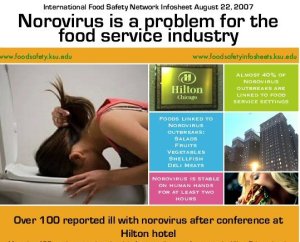The risk potential of contact with pathogens through spa pool use has been exacerbated through the promotion of the therapeutic properties of spas. Spa treatments can provide suffers of muscular skeletal disorders, such as rheumatism, relief from pain. However, this has become confused with mineral spa treatments for general ailments. Consequently, many people suffering from common  illnesses, such as influenza or digestion complaints, frequent leisure spa pools hoping to gain some relief from their symptoms. Unfortunately, such practice can introduce the bacteria into the Spa system and consequently increase the risk of infection for other bathers.
illnesses, such as influenza or digestion complaints, frequent leisure spa pools hoping to gain some relief from their symptoms. Unfortunately, such practice can introduce the bacteria into the Spa system and consequently increase the risk of infection for other bathers.
(From a NalcoEurope.com posting)Â Â Spa pools are the third most common cause of legionnaires disease and are known to harbour other bacteria that can cause serious skin complaints and even blindness.
A commercial spa pool should be considered as any bath that consists of a self-contained body of water, which is recirculated, filtered, heated, and chemically treated but is not emptied and cleaned and refilled after each bather.
Due to the high water temperatures (30-40°C), availability of nutrients and convoluted design Spa pools are particularly prone to microorganism proliferation. Furthermore, due to the high level of contact between the bather’s skin and the spa surface, biofilms quickly form and so frequent cleaning is essential.
Continuous filtration to remove contaminants and the application of a disinfectant is imperative in order to ensure safe hygienic conditions.
Spa pools should not be considered as small swimming pools. Spa pools operate with much smaller volumes of water in relation to the number of bathers that use them. In addition, water temperatures are much higher as is aerosol generation and the general risk to bathers from the number of water borne pathogens.
The following table identifies the micro flora that are of particular concern in spas:
| Bacteria |
Illness Description |
Other Detail |
| Shigella |
Diarrhoea, Fever, Nausea |
1-3 day incubation, 4-7 day illness, |
| E Coli |
Diarrhoea, Vomiting, Fever |
3-4 day incubation, & day illness |
| Giardia |
Gastroenteritis |
7-12 day incubation, 7-10 day illness, |
| Cryptosporidium |
Diarrhoea, Vomiting, Fever, Cramps |
7 day incubation, 10-14 day illness, |
| Legionella |
Flu Like Pneumonia |
Aerosols – SPA & HVAC |
| Pseudomonas Aeruginosa |
Follicultis – Swelling of Ear Canal |
Transmitted on Any Wet Surface |
| Mycobacterium spp |
Broken Skin Infections |
Bather Shed on Wet Surfaces |
| Mycobacterium. Avium |
Respiratory Illness – Flu Hypersensitivity pneumonitis |
Bather Shed.
Aerosol Transmission |
| Staphylococcus Aureus |
Skin, Wound, Eye & Ear Infections. Impetigo |
Bather Shed. |
| Leptospira Interrogans |
Weils Disease – Haemorrhagic Jaundice
Aseptic Meningitis |
10-20 day incubation, Pool Infected by Urine from Infected Humans and Animals |
http://www.nalcoeurope.com/library/spa-pools-and-pathogen-risk-assessment.html
 underlying health problems. Then there’s Campylobacter – the most common form of food poisoning – which is estimated to cost the UK economy £500m a year.â€
underlying health problems. Then there’s Campylobacter – the most common form of food poisoning – which is estimated to cost the UK economy £500m a year.â€

